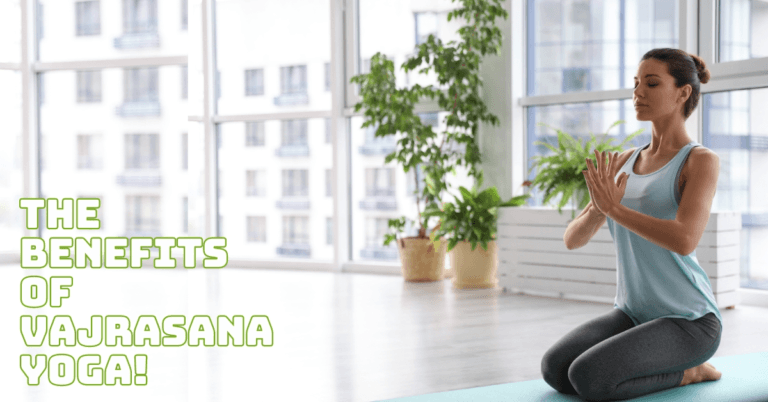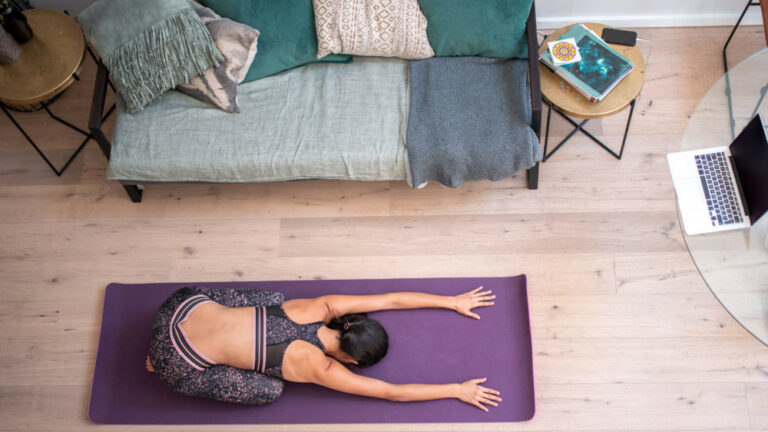Simple Ways To Practice Mindfulness
Simple ways to practice mindfulness can easily be integrated into your daily routine, offering a straightforward path to reducing stress, improving focus, and enhancing overall well-being.
These simple techniques can easily be incorporated into your daily routine, helping you reduce stress, improve focus, and enhance overall well-being.
Examining these approachable techniques can teach you how to develop mindfulness in your daily life and make it an organic and advantageous part of your day, regardless of your experience level.
Why Is It Important To Practice Mindfulness?
Practicing mindfulness is crucial for several reasons, as it profoundly impacts mental, emotional, and physical well-being.
Here’s a detailed explanation of why mindfulness is important:
1. Reduces Stress And Anxiety
The propensity to worry about the future or to linger on the past is one of the main causes of stress and anxiety.
Mindfulness helps people focus on the current moment. By paying attention to the here and now, mindfulness allows the mind to rest, breaking the cycle of stress-inducing thoughts and promoting a sense of calm.
2. Improves Mental Health
Reducing symptoms of anxiety, sadness, and other mental health issues has been demonstrated by regular mindfulness meditation.
Promoting a non-evaluative consciousness of ideas and emotions aids people in observing their mental conditions without feeling overpowered.
Encouraging emotional stability and resilience can result in a better relationship with one's thinking.
3. Enhances Focus And Concentration
In a world of distractions, mindfulness sharpens focus by training the mind to stay on task. Mindful practices improve attention span, cognitive function, and the ability to concentrate on the present activity.
This is particularly beneficial in personal and professional settings, where sustained focus is often required.
4. Boosts Emotional Regulation
Mindfulness fosters greater awareness of one’s emotional responses. By observing emotions as they arise rather than reacting impulsively, individuals can choose more constructive responses to challenging situations.
This leads to better emotional regulation, reducing the likelihood of being carried away by negative emotions like anger or frustration.
5. Promotes Physical Health
Mindfulness has been connected to numerous physical health advantages, such as reduced blood pressure, better sleep, and stronger immunity.
Reducing stress hormones and promoting relaxation contribute to overall physical well-being, helping the body function more efficiently and recover from illness or injury.
6. Encourages Better Relationships
Mindfulness enhances communication and relationship empathy by being more present and attentive in interactions.
It helps individuals listen more deeply and respond with greater compassion and understanding, leading to stronger, more meaningful connections with others.
7. Supports Self-Awareness And Personal Growth
Simple ways to practice mindfulness promote self-reflection and greater awareness of one’s thoughts, feelings, and behaviours, essential for personal growth and positive life changes.
This self-awareness is key to personal growth, allowing individuals to recognize patterns, set intentions, and make positive life changes.
8. Facilitates Mind-Body Connection
Mindfulness techniques like body scans and mindful breathing improve the relationship between the mind and body. This awareness helps individuals recognize how their mental states influence their physical health and vice versa, fostering a holistic approach to well-being.
9. Cultivates Gratitude And Contentment
Mindfulness helps individuals appreciate life's simple pleasures by focusing on the present moment, fostering a sense of gratitude and contentment. A happier and more optimistic outlook on life can result from this change in perspective.
10. Enhances Creativity And Problem-Solving
A mindful approach to challenges can open the mind to new perspectives and creative solutions. By reducing mental clutter, mindfulness allows for clearer thinking and more innovative problem-solving.
Simple Ways To Practice Mindfulness
Whether you are a beginner or an experienced mindfulness practitioner, these easy techniques can seamlessly fit into your daily routine.

1. Mindful Breathing
Practicing mindful breathing is an easy yet effective approach to infuse your day with serenity and awareness.
Select a calm location where you can comfortably practice sitting. Shut your eyes and inhale deeply through your nose, letting your lungs fill with air.
After taking a moment to appreciate the silence and hold your breath, slowly release any tension by gently exhaling through your mouth.
Pay attention to how the air feels as it enters and exits your body as you breathe: the warmth as it exits your body, the rise and fall of your chest, and the coolness of the air as it enters your nose.
This mindful attention to your breath can quiet your thoughts, reduce stress, and anchor you in the present moment.
Whether you're starting your day, taking a break, or winding down at night, mindful breathing offers a peaceful pause in the busyness of life.
2. Body Scan Mindfulness
The body scan is a gentle and calming mindfulness practice that invites you to connect with your body.
Find a peaceful, cozy spot to sit or lie down. Shut your eyes and inhale deeply, letting your body unwind. Start at the top of your head, noticing any sensations, tension, or discomfort.
Slowly move your attention down to your forehead, eyes, cheeks, and jaw, softening each area as you go.
Continue down your neck, shoulders, arms, and hands to your chest, abdomen, and lower back. As you move through each part of your body, observe what you feel without judgment, allowing yourself to experience the sensations fully.
Finish by scanning your legs, feet, and toes. This practice helps you release stress and deepen your connection with your body, promoting relaxation and well-being.

3. Mindful Eating
Mindful eating is a delightful way to enhance your relationship with food and bring more awareness to your meals.
Start by taking a moment to appreciate the food in front of you—the colours, textures, and aromas.
As you take your first bite, slow down and savour the flavours. Note the small subtleties you might normally miss, the richness of the flavours, and how the meal feels in your mouth.
Chew slowly, allowing yourself to experience each mouthful fully. Pay attention to how your body feels as you eat—whether you’re hungry, satisfied, or full.
This practice encourages you to eat with intention and gratitude, transforming meals into a nourishing experience.
Eating with awareness can improve your satisfaction and teach you to pay attention to your body's cues. This results in better eating habits and a greater appreciation for feeding yourself.
4. Walking Meditation
Walking meditation is one simple way to practice mindfulness. By focusing on the sensations of each step and the rhythm of your breath, you can turn an ordinary walk into a calming and grounding experience.
As you begin your walk, bring your attention to the sensation of your feet connecting with the ground.
Feel the pressure shift from heel to toe with each step, and notice the movement of your legs as they carry you forward.
Synchronize your breath with your steps, breathing in and out naturally, allowing your body to find its rhythm.
As you walk, take in your surroundings with curiosity and openness—observe the colours, shapes, and textures around you, listen to the sounds of nature or the city, and notice any scents in the air.
Instead of letting your mind wander, gently guide it back to the present moment, fully experiencing the walk.
Walking meditation can bring peace and clarity, helping you feel more connected to your body and the world around you.
5. Mindful Listening
Mindful listening is a powerful practice that fosters deeper connections and enhances your communication skills.
Whenever someone speaks to you, try your best to pay attention. Put everything else aside and give the person in front of you your full attention.
Listen not just to their words but to the tone of their voice, the rhythm of their speech, and the emotions behind them. Notice their facial expressions, body language, and subtle cues that might reveal their feelings.
Resist the urge to plan your response while speaking. Instead, simply absorb what they say. This attentive listening shows respect and empathy, making the speaker feel heard and valued.
It also helps you understand the conversation more deeply and respond thoughtfully. By practicing mindful listening, you can cultivate stronger, more meaningful relationships and create a space where open, authentic communication can thrive.
6. Mindful Pause
A mindful pause is a simple yet powerful way to reconnect with yourself throughout the day. Whenever you feel overwhelmed or caught up in the busyness of life, take a moment to stop and check in with yourself.
Close your eyes and take a few deep, calming breaths. Feel the air entering your lungs as you inhale, and as you exhale, feel the tension in your body relax.
Tune into your mental and physical state—are you feeling stressed, tired, or scattered? Or perhaps you’re feeling content and energized?
Whatever you notice, acknowledge it without judgment. These short, mindful pauses allow you to reset, giving you the space to breathe and refocus.
Integrating these mini-breaks into your day will enable you to approach your tasks with a clearer mind and a calmer demeanour, helping you stay balanced and present even amidst a busy schedule.

7. Gratitude Journaling
Gratitude journaling is a heartwarming mindfulness practice that can bring more positivity and joy. Spend a few minutes every night thinking back on your day and listing three things for which you are thankful.
These can be simple joys like a warm cup of tea, a gorgeous sunset, or a kind word from a friend. As you jot down your thoughts, allow yourself to fully appreciate these moments, no matter how small they may seem.
This practice shifts your focus from what might be missing or challenging in your life to what is already abundant and fulfilling.
Over time, regularly acknowledging the good in your life can boost your mood, reduce stress, and cultivate a more optimistic outlook.
Gratitude journaling is a gentle reminder of the blessings in your life. It helps you end each day on a positive note and fosters a deeper sense of contentment and well-being.
8. Engage Your Senses
Engaging your senses is a delightful way to anchor yourself in the present moment and fully experience simple pleasures.
As you go about your day, take a moment to immerse yourself in whatever you're doing. If you’re sipping a cup of tea, savour its warmth and aroma, and pay attention to the taste as it dances on your tongue.
While taking a shower, notice the feeling of the water cascading over your skin, the sound of it splashing, and the refreshing scent of your soap.
When you’re outdoors, listen to the rustle of leaves, feel the breeze against your face, and appreciate the vibrant colours around you.
These sensory experiences can enhance your awareness and enjoyment of everyday moments. This practice helps you stay grounded and deepens your connection to the world, making each experience more vivid and meaningful.

9. Guided Meditation
Guided meditation is one simple way to practice mindfulness. It offers step-by-step instructions and soothing support to help newcomers relax and focus.
These meditations, available through various apps and online resources, provide step-by-step instructions and gentle guidance to help you relax and focus.
Whether you have just a few minutes or a full hour, you can find a guided session that fits your schedule and needs.
During a guided meditation, an experienced instructor will lead you through visualization, breathing exercises, and gentle prompts, making it easier to stay present and centred.
This practice helps you cultivate mindfulness without the pressure of figuring it out alone. By following the guidance, you can gradually build your meditation skills, explore different techniques, and discover what resonates best with you while enjoying a peaceful and structured approach to mindfulness.
10. Mindful Daily Activities
Transforming routine tasks into mindful moments can infuse your day with calm and presence. Start by giving routine tasks like folding clothes, cleaning dishes, and brushing your teeth your whole attention.
Observe the feel of the toothbrush on your gums and the flavour of the toothpaste while you brush your teeth.
When washing dishes, consider the feel of the warm water and the plates' texture. During laundry, observe the rhythmic motions of folding each item and the softness of the fabric.
By focusing entirely on these simple tasks, you can shift from autopilot to a state of mindfulness, making even the most mundane activities an opportunity for relaxation and presence.
This practice helps you stay grounded and enhances appreciation for your day's small, often overlooked moments.
11. Mindful Stretching
Mindful stretching is a wonderful way to enhance your flexibility while cultivating a deeper awareness of your body. Locate a cozy area where you can stretch without being interrupted to start.
As you start your stretching routine, focus on the sensations in your muscles and how your body responds to each movement.
Move slowly and deliberately, paying close attention to the stretch and how it feels in different areas of your body.
Breathe deeply and evenly, syncing your breath with your movements—inhale as you ease into a stretch and exhale as you deepen it.
Notice any areas of tension or tightness and allow yourself to release them gently with each breath.
This mindful approach helps you increase flexibility, reduce muscle tension, and foster a greater connection between your mind and body, promoting overall well-being and relaxation.

12. Mindful Driving
Mindful driving can transform your commute into a peaceful and grounding experience. As you drive, bring your full attention to driving itself.
Feel the steering wheel in your hands, the engine's vibrations, and the vehicle's motion on the road.
Notice the scenery unfolding around you—whether it's the changing landscapes, the colours of the sky, or the movement of other cars.
Pay attention to your breathing, taking calm, steady breaths as you navigate. Avoid distractions such as phone calls or stressful thoughts, and stay present with each moment of the drive.
Focusing on these aspects can turn your commute into a time of reflection and relaxation, helping you arrive at your destination with a clearer mind and a more tranquil demeanour.
Mindful driving enhances awareness and makes your journey more enjoyable and less stressful.
13. Mindful Cleaning
Mindful cleaning is one simple way to practice mindfulness. Focusing on the sensations and activities involved can transform household chores into a meditative experience.
As you tackle tasks like vacuuming, washing dishes, or dusting, bring your full attention to the activity.
Feel the weight of the vacuum handle, the sensation of the dishwater on your hands, or the texture of the dusting cloth against surfaces.
Notice the rhythmic movements and the sounds of your cleaning tools—the hum of the vacuum, the clink of dishes, or the swish of the duster.
Focusing on these sensory details allows you to fully engage in the task, transforming routine chores into moments of mindfulness.
This approach makes cleaning a more pleasant experience, helps you stay present, and reduces the stress of multitasking. It turns even mundane tasks into opportunities for relaxation and mental clarity.

14. Mindful Gardening
Gardening mindfully is a great way to reconnect with nature and focus on the here and now. Observe how the dirt feels, changes in texture, and moves between your fingertips when you work in your garden.
Note the earthy aroma of fresh compost and the delicate scents of budding flowers. Note the soft rustle of leaves in the breeze and the muttering of nearby birds.
Engage all your senses as you plant seeds, pull weeds, or water your plants. By focusing on these sensory experiences, you turn each gardening task into a mindful practice.
This approach enhances your enjoyment of gardening and helps you feel more grounded and connected to the natural world.
Mindful gardening can bring peace and satisfaction, transforming your garden into a sanctuary of calm and presence.
15. Mindful Technology Use
One easy method to develop mindfulness is to utilize technology mindfully. Before using digital gadgets, think about your aims.
This helps you be mindful and balanced. Take a moment to stop and inhale deeply before grabbing your phone or going on social media.
Think about the device's purpose. Are you looking for information, interacting with people, or just killing time?
If you know your objectives, your use of technology can be directed toward a greater purpose.
Pay attention to how your interactions with technology affect your mood and energy. Notice if prolonged screen time leaves you feeling drained or distracted.
To foster mindfulness, limit your screen time and choose activities that enhance your well-being, such as reading, journaling, or spending time outdoors.
By incorporating these mindful practices, you can create a healthier relationship with technology and ensure it supports rather than detracts from your overall sense of balance and contentment.
Conclusion
Adding mindfulness to your routine doesn't mean making a significant lifestyle shift. Easy techniques such as mindful eating, deep breathing, and being in the present moment can have a big impact.
Regularly using these practices can create more tranquillity, improve focus, and lessen stress. Recall that practicing mindfulness is a process rather than a goal.
By exploring mindfulness practices, you can start small, progressively increase your practice, and make long-lasting, beneficial changes.
I trust you enjoyed this article, Simple Ways To Practice Mindfulness. Please stay tuned for more blog posts soon. Take care!
JeannetteZ
>>>Please click here to read my all-inclusive article about Lessons That Will Teach You All About Stress<<<
>>>Are you interested in Natural Healing And Stress Relief through Herbs? Please click here for my #1 Recommendation<<<
Your Opinion Is Important To Me
Do you have thoughts, ideas, or questions? I would love to hear from you. Please leave me your questions, experiences, and remarks about this article, Simple Ways To Practice Mindfulness, in the comments section below. You can also email me at Jeannette@Close-To-Nature.org.
Disclosure
This post may contain affiliate links. As an Amazon Associate and other affiliate programs, I earn from qualifying purchases at no extra cost to you. Please read my full affiliate disclosure.
You might also enjoy these blog posts:
Guide To Flower Diseases Prevention And Treatment
Common Vegetable Diseases In Your Garden
The Benefits Of Vajrasana Yoga





